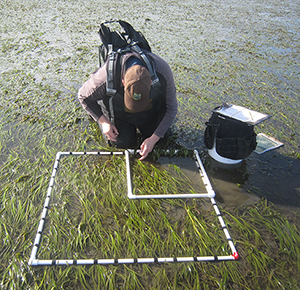The Oregon Legislature’s passage of House Bill 3114 is “another historic Oregon first in the fight against ocean acidification and hypoxia (OAH) and shows Oregon leaders’ awareness of the importance of healthy oceans,” said the Oregon Department of Fish and Wildlife in a press release.
“Oregon is an epicenter for OAH and was one of the first places in the world to observe direct impacts of ocean change when oyster hatchery production collapsed in 2007 from ocean acidification.,” said the release.
The bill provides $1.9 million to fund important research and monitoring along the Oregon coast and estuaries, develop best management practices, and conduct outreach and education. ODFW will directly receive $470,000 of this funding to assess shellfish and habitat in estuaries and map estuaries to document long-term OAH impacts.
“This legislative investment helps ODFW keep a finger on the pulse of our estuaries by increasing our capacity to survey shellfish and estuary habitats more frequently,” says Caren Braby, ODFW Marine Resources Program Manager and Co-Chair of Oregon’s OAH Council. “Estuaries provide important nursery habitat for many ocean species and support both commercial and recreational fisheries as well as oyster mariculture operations.”
The Oregon Ocean Science Trust (OOST) will receive funding to support monitoring and management of estuarine and ocean resources including OAH monitoring in Oregon’s Marine Reserves and monitoring in Yaquina Bay. The OOST, established by the state’s legislature in 2013 will work with Oregon’s OAH Council to distribute approximately $1 million in competitive grants from the $1.9 million the bill provides. The Science Trust board met July 7 to start the planning process to call for funding proposals in eight project areas as directed by the bill.
Ocean acidification is caused when carbon dioxide from the atmosphere enters the ocean and chemically reacts with ocean water, making the ocean more acidic (lowering the pH). Hypoxia (low oxygen) occurs when deep ocean waters with less oxygen rise and are pushed closer to the shore by northerly winds, and then near-bottom waters are robbed of oxygen by decaying organic matter. This happens more frequently than normal due to climate changes that heat the land and ocean waters and change normal wind patterns.
“This bill’s passage is very timely,” said Jack Barth, Oregon State University (OSU) and Co-Chair of Oregon’s OAH Council. “This year, we’re seeing early upwelling and expect a more severe than average hypoxia season during late summer. These low-oxygen events can hurt marine life that can’t escape fast enough.”
Barth said OSU will receive funding that leverages existing long-term projects that monitor ocean conditions and support shellfish research and industry. Liu Xin, manager of the Oregon Oyster Farms, Inc. in Newport says these projects will help the oyster industry better understand OAH-resilient oysters and improve oyster production in the hatcheries with oysters sourced from OSU’s Molluscan Broodstock Program.
“Oregon has been producing the majority of oyster larvae for the oyster industry on the West Coast since the industry was established in 1900. It’s been challenging on larvae production the last few years due to OAH, and the bill’s funding will help us understand OAH impacts and work to improve oyster production in the face of changing ocean waters,” Xin said.
Laura Anderson, chairwoman of Oregon Ocean Science Trust (OOST) and owner of Local Ocean Seafoods restaurant and fish market in Newport is concerned about environmental and commercial fishing impacts from OAH.
“As a seafood business owner, I am very worried about rising OAH levels. It puts the entire marine food web that our coastal communities love and value at risk,” Anderson said.
Oregon’s coastal economics rely on a vibrant marine ecosystem. The nearshore waters are home to sport and commercial fisheries, all of Oregon’s mariculture operations, and contain critical nursery grounds for economically important species including rockfish, oysters, salmon, pink shrimp, clams, and Dungeness crab. Together, these fisheries are valued at $137 million per year in primary sales with many times that value in economic stimulus supporting our coastal communities.

